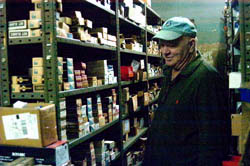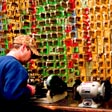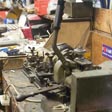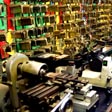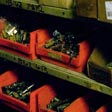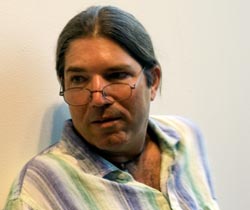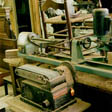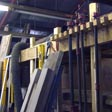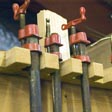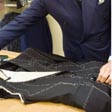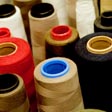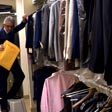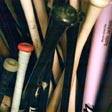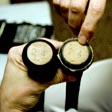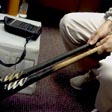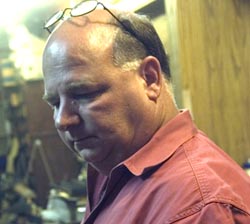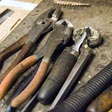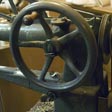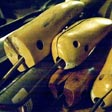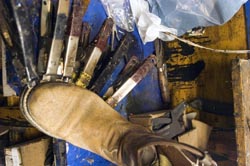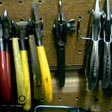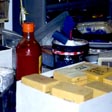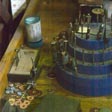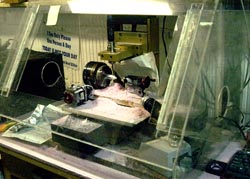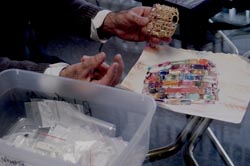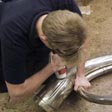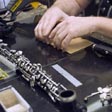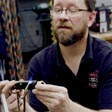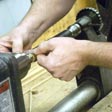Satisfying Work in Skilled Repair: Traditional Occupations in Baton Rouge, Louisiana
By Jocelyn and Jon Donlon
Introduction
Traditional occupations include a wide array of skills, differing in kind and type. Always constituting work, in the sense that these undertakings earn a wage, traditional occupations are likely to be complex and varied. They might well include fairly specialized training with tools and materials, as well as in arcane methods of construction, repair and design. Often, because these specialists are becoming more rare, their performance provides a corresponding "exhibition of prowess." An unfortunate reality in the 21st century is that the "factory system" of manufacturing is in competition with many traditional occupations. Mass production often provided consumers with cheaper production previously fulfilled by traditional goods and services. As a result, many traditional occupations find it increasingly difficult to survive and flourish.
In Baton Rouge, Louisiana, family-owned businesses that specialize in small repair are managing to hold steady in the face of mass production, largely because the work, itself, offers intrinsic satisfaction in performance. Baton Rouge, situated between Lafayette, well-know as a center of so-called Cajun culture, and New Orleans, a bit of Caribbean lodged of the coast of the United States, often suffers from an identity crisis. Its landscape, mirror-flat save for a bluff overlooking the majestic Mississippi River, is interrupted by a handful of impressive petro-chemical plants sited on curves of that great waterway as it meanders through "Red Stick." Amidst the large plants are long-standing small businesses that quietly lend their occupational folk practices to the city's identity.
To document these some of these businesses, we spoke with seven practitioners: Gary Alford at Alford Safe and Lock; Jay Cudd at Ebeniste Furniture Repair; Shavarsh Kaltakdjian at Shavarsh Custom Jewelry and Repair; Manuel Martinez at Martinez Custom Clothier; Jack Marucci at Marucci Sports; Fred J. Militello, Jr. at Militello's Shoe Repair; and Brian Falcon and Doug Geiman at Zeagler's Music Store's Instrument Repair. Each of the practitioners we spoke with share a cluster of core attributes: they possess skills acquired through practice and training (often through working with professionals in the field); they rely on specialized, often arcane tools; and because of their drive to satisfy customers, they seek to learn and refine their skills.
Alford Safe and Lock
Gary Alford says he was born "right here in Baton Rouge," speaking in the back office of his downtown locksmith shop, Alford Safe and Lock. The office is lined with steel shelves crammed with manufacturer's catalogs and dog-eared technical manuals. (The space is also festooned with ribbons, medals and mementos indicating his success in competitive shotgun sports.) Alford, in his early sixties, explains that he has "always" worked. His dad, Edgar Alford, ran the business in several locations since opening in 1946, and Alford recalls making keys "since [he] was eight or nine years old."
Prior to settling in Baton Rouge, Edgar Alford and his two brothers, based out of the Dallas-Fort Worth area, worked the locksmith trade from a station wagon, setting up mobile shops in little towns of Texas, North Louisiana, and Oklahoma. Traveling with hand tools, lock picks, and even a hand-cranked key machine, the brothers did small engine repair, worked on the locks in banks, and even sharpened lawnmower blades. According to Gary Alford, this was in the 1930s. Eventually, after World War II, one of the uncles opened a lock shop in Panama City, Florida. Edgar and the other brother left Texas to visit their brother in Panama City. On the return route, they went along the Gulf Coast—through Pensacola, Biloxi, New Orleans—looking for a place where they might like to open their own business. Baton Rouge seemed a good choice because it was the home of Standard Oil Company's refinery, now Exxon. In addition, it was the capital city, and it hosted a large university with brisk population turnover.
Once opened in the mid-1940s, the shop has flourished at several locations during the decades in Baton Rouge. Over the years Alford's business retailed bicycles, repaired small engines, provided sharpening services, and sold the routine products associated with security: chains, keys, locks, safes and so on. In order to service clients, an enormous inventory of key blanks and lock parts is maintained. Small, yet powerfully built power milling and filing machines on premises range from a now little-used device devoted to antiquated "skeleton keys," through computer-driven contemporary models. Thousands of key blanks are kept at ready access, near the cutting machines. Although machines do very precise work, finishing is often done by hand, using specialized hand tools, awls, drivers, files, grips, hand-grinders, pliers with various jaws, punches, and small hammers.
Gary Alford talks about how locksmithing is a very old, very basic trade. If you want security, you have to try to close something, and then have a way to open it up. A lock involves a gate, or tumbler, which used to be made of wood. Now they may be metal. In the daily business, Alford is called to replace locks, fix broken locks when pieces fail, or perhaps install new locks. When asked why some key shops make better keys than other shops, he responded that it is all in the machine: "They might be using a $200 machine, and we use a $7,000 machine." A good machine has closer "tolerances," or the depth to which a key is cut. He says that "the depth has got to match the pin tumblers that are in the lock"; otherwise, the key will not work. His preferred residential lock is Schlage, with brass tumblers that help with corrosion, particularly in the high humidity environment of Louisiana. For some of the older Morris locks—skeleton key locks—he has had to hand-fabricate broken springs because parts aren't available.
He is also called to crack safes: "We get called when a safe is closed and they don't have the combination." In that case, he tries to "compromise" the lock, not the safe, maintaining the value of the box. He dispels the myth of safecracking through sound, as portrayed in Hollywood films: "Sound has nothing to do with opening a safe," he says. "It is strictly feel and sight." He cracks open a safe by "feeling" the combination. "It talks to us," he says; they "feel the tumblers, the round tumblers themselves." He also says that films with dynamite on the outside are strictly fiction: "Dynamite has opened safes before, but the dynamite has to be inside the safe to work. Dynamite on the outside has never worked."
Alford Safe and Lock takes a customer from the early days of hand-cranked machines into the 21st century, which necessitates new technologies. Now, in order to crack a safe, Alford can use a machine that will dial different combinations—though the machine doesn't work on all safes. He has been trained in replacing electronic automobile keys. Another change which has occurred in the State of Louisiana is that now a key repairperson must be licensed by the State Fire Marshal's office, which requires locksmiths to pass a criminal background check.
Indeed, trustworthiness is a key characteristic of any locksmith. Alford concludes the interview with a story:
This customer up there [in the front of the shop] has a padlock on the gate of his hunting lease. He has about twenty members of his hunting lease that he gives a key out to, and it's a high security key. It can't be duplicated anywhere but here. [A member] has to come in himself and have it made, and he has to show an ID showing that he's the person having it made.
That is the kind of trustworthiness that comes from a family-owned business with more than 60 years of experience in Baton Rouge.
Ebeniste Furniture Repair
Jay Cudd, of Ebeniste Furniture Repair in Baton Rouge, Louisiana—which also does custom furniture design and fabrication—was born in Alexandria, Louisiana. Explaining the shop's name, Cudd points out that ebeniste is French for "woodworker." He began his occupation in woodwork when, about twenty years ago, he had a flat tire in Baton Rouge, and as good luck would have it, he stopped in at a woodworking shop to use the phone. "I was already a carpenter," he recalls, "remodeling old homes and stuff like that. And I walked into this building, and there was furniture lying around, pieces and parts. It was a woodworking shop." While waiting at the shop for a friend to give him a ride, he began looking at the work being done. "I ended up kind of hounding [the guy in the shop] for a job for the next three or four months, until he hired me." Thus began what amounts to Cudd's apprenticeship, extending his experience from carpenter to rustic furniture builder.
After some time enjoying "hands on" experience, he opened his own shop in Baton Rouge, at which time he entered a new "learning curve" to build and repair fine furniture, one that involved spending "hours at the LSU library doing lots of research." He learned his craft largely through research and trial and error. Cudd recalls that clients would bring furniture in to be repaired and refinished, so he had to research traditional methods of working.
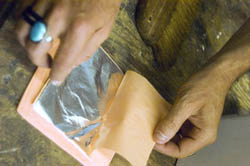
The woodworker incorporates these techniques into new, custom furniture—he showed a mock-up of one piece carried out in less expensive wood to test the "look"—and he does conservation and restoration. "Restoration is different from conservation," he notes. He says some clients will say just spray some lacquer to make it look nice. "And I can make it look good with that," he says, "but that's just not what goes on. I've got clients with three million dollars in furniture in their house, and if they ever get that insured, they send out people who know what they're looking at. . . . They see that it's a beautiful piece, but it's worth half if not a third of what it should be because you've done that to it. . . . You've got to treat some of that stuff as an artifact."
Belt sander, wood lathe, specialized vices and clamps.
The woodworker uses power and hand tools, some of which he fabricates himself, as well as a variety of other instruments to create or deal with the surface. Aside from those basic tools, the woodworker uses power tools such as drills, routers, a table and a band saw, power planer, sanders. In fact, he was in process of making an in-house, wide-bed power sander during this interview, designed especially for custom furniture. Predictably, furniture repair and custom work demands a wide selection of spring clamps, "C" & pipe clamps and strap clamps, in part because gluing is almost always part of the process. The work space at Ebeniste Custom Furniture also displays various "jigs," some rough and general, made from scraps for a single use, and many specialty tools designed to guide power devices. He also uses "profile" shapers and profile molders to replicate the texture of beadwork, carved wood, and other designs. He can buy some arcane tools, find others on the antique or used market and rehab them, or make them, himself. Indeed, because of the specialist nature of his undertaking, a significant portion of his time is devoted to creating his kit and materials.
Any given project might be composed of several individual pieces of wood pitted together in 2D or 3D, or it might be carved, inscribed, subject of applique, or colored with dye, paint, or varnish. Cudd is a specialist in "French water gilding," an elaborate process involving multiple applications of a thin layer of a plaster and glue mix; repeated sandings of these layers; the application of gold leaf to a tacky surface; and then the burnishing of the layers underneath the gold leaf to render a high luster. He is also skilled in "shellacking," an involved process of applying several coats of shellac that must account for the humidity in the atmosphere when mixing the product. "It's a very old finish," Cudd notes. "It's considered the most beautiful finish there is."
Martinez Custom Clothier
Manuel Martinez, owner/operator of Martinez Custom Clothing, was born in Tampico, Mexico, in the state of Tamaulipas, located on the north bank of the Pánuco River. Martinez recalls being interested in clothing from the time of his First Communion; in the process of having his suit made for that special occasion, he was able to see the tailor at work. The process intrigued him. The would-be tailor first came to Louisiana in the mid-1960s to learn English. At first he worked on a ranch, but his interest in fashion and tailoring soon emerged.
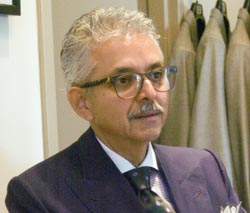
As a youngster of fourteen, Martinez traveled alone from Mexico to Lake Charles, Louisiana, to begin his work life, at first employed at Ling Haven Black Angus Farm. After about six months, he transitioned to employment with a well-to-do family and, noticing their clothing, décor, and design, Martinez's enthusiasm for well-made clothing grew. His parents had hopes that he would become a veterinarian but, as he recalls, "when I graduated from college, I told dad I was going to do that [be a tailor]. And he said, 'Ok, kid, you're on your own!'" Apparently it was a good decision for Manuel, since his shop in Baton Rouge has been thriving for several decades.
During his apprenticeship in the late 1960s, Martinez worked with Nick Lopez in Houston; then he went to work with Bill Fioravanti in New York. He also attended a school in Binghamton, New York. He is especially appreciative of Lou Myles, who worked in Canada and was influential in the United States. By 1984 the business was going in Baton Rouge, with a retail area and, more importantly, custom tailoring and clothing design on premises. As Martinez puts it, "September 2014 was our 30-year anniversary. So we have survived the good and the bad." Martinez was the first person of Mexican descent to join, and he eventually became president of the Custom Tailors and Designers of America organization (CTDA). Through this organization, he competed with other tailors, winning several times in New York, Las Vegas, and California. His business has been covered by such national media as the Wall St. Journal and the Robb Report, and he received international attention when he was represented several times in the World Congress Association in Europe.
Martinez explains the process of designing and making fine clothing. A big part of the process is "fitting" the garment to the person's lifestyle and personality. To discover these details, Martinez says that he would begin work with customers by interviewing him or her (usually him) for about forty minutes: "It would be nothing about getting measured. It's me finding out about his lifestyle, what he wants the suit to do for him, where he's going to wear it, and also his wearing habits. He might want to wear it on the plane, or he might drive with the suit on." During the interview, Martinez will take notice of the client's skin color and personality, considering possible fabrics. He wants to know the shape of the client, what he does, and the customer's personality, which involves mechanical and practical measurement. The way the clothes are constructed plays a role in how the garment hangs and lasts, and thus the appearance of fit. For precision in measuring, he uses a formula that helps him achieve accuracy:
If a man is 5'10", if I measure his chest, I know what his arms should be. And I know what his waist should be, and what his seat should be. And then if he wears his trousers normally, I know what his rise should be. Because in a 5'10" individual, if he has a rise of 34 and a seat of 41, then his rise should be basically ten and a half. Now, for every inch in height above that, you add an eighth of an inch—are you following?
He says that the calculations are "on the money" 98% of the time.
The Martinez workroom in the back of the shop, entirely different from the sales-forward retail front section of the business, features the materials and tools of the trade: many kinds of sewing supplies, prep machines (professionally large, mid-size, small, and almost tiny irons), a handful of heavy-duty stitching machines, and work tables. Dozens of spools of colorful thread and larger bobbins of heavier stuff provide an almost festive air. Garments hang along almost one entire wall of the workroom. Nearby catalogs of fabrics offer suggestions about potential future choices. Patterns are filed and stored on the spaces above the garment rack.
The sewing used to be done entirely on site, but since so many of his tailors have passed away, and Martinez says that tailoring is a "dying art," he now must job out the sewing to outside businesses around the United States. Much of a high quality suit is machine constructed for uniform, tight stitching. However, some components must be carried off with handwork, carefully turned out and finished. In particular, he hand-stiches the points of the suit that "have stress," such as the armholes, while the unstressed parts can be machine stitched. Unlike mass-produced suits, which have lapels fused with glue, Martinez's lapels are hand-stitched so that they "spring back" into shape. Martinez says that a good suit will "enhance the good and camouflage the bad." He discourages his clients from following trends; instead, he seeks the best fit. Generally, a client will go through several fittings before guide threads are removed and the work completed. At that point, the new clothing should reflect the color, the personality, the needs, and certainly the body of the customer.
Marucci Bats
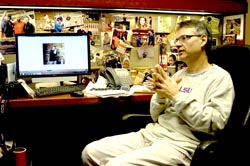
Jack Marucci, Director of Athletic Training at Louisiana State University and co-owner of the very successful Marucci Sports, got involved in manufacturing wooden baseball bats, the first product in the business' now diversified line-up, because he wanted to accommodate his son, Gino. In his office on the LSU campus, Jack pointed out the irony that Gino, who now plays baseball at the University of Houston in Texas, and his team is contractually bound to use other bats. Nevertheless, Gino was the impetus for the now famous Marucci bat.
In about 2002, when Gino was playing for Little League, he and his dad "used to watch baseball a lot. [Gino] saw wooden bats used by all the major league guys, so he wanted a wooden bat. So I called around a lot of different companies that make bats, like the bigger companies that are more established. They didn't make them quite small enough." But the boy would not give up: "Well Dad, I really like that wooden bat, that's what I want to use."
Marucci points out that, quite happily, he grew up in Uniontown, Pennsylvania, where his junior high school offered woodshop. When asked about the best class he has ever taken, Marucci always answers "woodshop" where he learned how to use a lathe. To make Gino's bat, Marucci bought a cheap wood lathe, found some stock, and began the enterprise. At the time, he thought the lathe would probably last a lifetime because he wasn't "going to make that many bats." When other parents saw that Gino was doing well with his wooden bat, they began placing orders for their children. Marucci then began a bit of a cottage industry, turning out children's bats priced at around $25.
In the early days, Marucci would hang a model bat in front of him and "kind of freehand the bat." Then he read about a boning process where you could "press the wood a little harder with these bones." He began with a cow femur sourced by a colleague whose dad had cattle. At first the labels were produced in small batches on a tiny machine. Now leading edge laser cutting machines, driven by computer, emboss precise messages on the bats.
Soon enough Marucci had a chance conversation with a friend in St. Louis, a major league player, Edwardo Perez. They began to talk bats, and on his next visit, Marucci brought up a few of his hand-turned wooden bats. "I didn't know what he was going to do with this. I figured he was going to hit in the cage." But Eduardo picked up the stick, standing in front of the hotel, saying "Holy cow, this is pretty nice. . . . I'm going to use this thing tonight!" Marucci had been working with one lathe, spinning wooden bats in the garden shed, "turning" out wooden bats one at a time. He wasn't familiar with the ins-and-out of licensing involved to market to the big leagues. But that chance conversation with Perez would evolve into Marucci Sports, a substantial enterprise with a number of professional sports figures participating in ownership and contributing to management. Ultimately, the bats would be used by major leaguers such as Giancarlo Stanton, David Ortiz, José Bautista, Edgar Rentería, Carlos Beltrán, José Reyes, David Wright, Gary Sheffield, Manny Ramírez, Todd Helton, Ryan Howard, Albert Pujols, Chase Utley, Shin-Soo Choo, Andrew Berardinucci and Luca Portolese. Jack has lost track of many of the early bats, and has had to buy a few on EBay. A Marucci bat hangs in the Hall of Fame as only one of two bats to hit seven runs in the World Series.
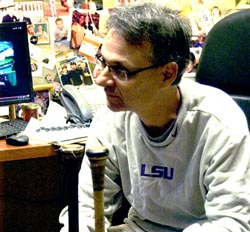
Since 2002, when Jack first began to turn wood for his son, he has had to seek out proper methods of creating the bats and, sometimes more difficult, sourcing the proper stock. "We have our own wood mill out of Pennsylvania. I befriended a mill out there that we ended up buying. It was on an Amish farm, so we have Amish sawyers." "Now, these Pennsylvania Amish mills, owned by Marucci Sports, are devoted solely to cutting, roughing out, kilning, and then shipping pallets of square blocks of wood to the Louisiana factory. Although the foundation principals have changed very little, it's been a long development process as the company has grown. Only dense, flaw-free, good, sound wood can be used, with maple being the number one choice. The formula for grading the wood is what Marucci calls "the secret sauce" safeguarded by the manufacturers. The formula is responsible for selecting only the highest quality wood for players' bats. With such high standards, quite of lot of expensive materials wind up being just plain "burned," some of the most expensive kindling in town. Other good, but not perfect, wood is used to make souvenir bats for people to collect. Today, at the plant in Baton Rouge, the company uses technological tools such as AutoCAD and CNC machines to design and cut a particular bat. However, a great deal of handwork goes into each professional bat, including the boning process.
Jack discusses the qualities of a great bat:
Something balanced very well, that's hand crafted with every little bit of detail in it. It has their number stamped in it, their number on the bottom. It is hand polished. [When] you pull it out of the bag, it's like a piece of furniture. You almost don't want to hit with it because it looks so good. But once you hit with it, it's the sound. It's very loud, a cracking noise that you know the ball will travel further than most bats because of the density of the wood. . . . A player will tell you: "this is the best bat I know that's out there. There's nothing compares to this."
Jack Marucci ends his discussion by noting, "A lot of guys wear their shoes and their gloves, but the bat is what they perform with. It's their magic wand, it's their tool of trade."
Militello's Shoe Repair
Fred A. Militello, Jr. was born in Baton Rouge, where he lived all his life until his unexpected death on December 26, 2014, several months after this interview. He was born into the family business, Militello's Shoe Repair, well known and respected for cobbling and repairing shoes. In 1985, Freddy Jr. got seriously involved in the business, which spans three generations, including Freddy's father, Fred Militello, Sr., his grandfather, and an uncle. The name is deeply rooted in the region. Freddy Jr. was out of school and married before he went to work with his dad feeling like it was in his best interest "to carry on the name and go into the shoe repair business." He learned by apprenticing and doing the odd jobs around the shop; his dad and the other workers taught him. "I always worked in the shop some. I was growing up doing different things, taking heels off, or putting heels on. My father would give me different tasks to do. Sewing a sandal or doing something." Freddy said that it's good work, "just taking a pair of worn-out shoes and making them look like new. And getting the rewards of the customer liking the job, bringing life back into the shoe."
Freddy Jr. and his dad set up separate stores in 2005. At the front of Freddy Jr.'s shop, workers receive clients and take shoes in to service. There is also a small stock of retail goods: shoe polish, plastic and wooden shoe storage forms, shoe care products, shoelaces in an array of colors and materials, and such things. However, the "face" of the business is composed of the service desk and a rank of heavy, special cobbler's machines. The back area is set aside for the offices, storage, a couple of special very heavy duty stitching machines and the bins of repair parts, such as heels, soles, instep forms, and so on.
Aside from powerful sewing machines, and machines that punch perforations through thick soles, cobblers rely on a wide selection of hand tools: awls, burnishes drivers, pinch-pliers, skiving knives, and much else. Several different kinds of hammers, including dome-fronted instruments used to turn leather around corners, are engaged in this work. Clients bring shoes into the shop for many reasons. Some wish to extend the life of the goods; others have a pair of "favorite shoes" they don't want to let go of. Routine tasks include repairing the shoe until it is returned as close to its original condition as possible, including name-brand soles.
In order to go beyond routine shoe repair, Militello became a certified orthopedic shoe technician, after completing a course at Ball State University in the late 1980s. The certification allowed him to do the technical work of preparing corrective changes and orthopedic fittings for shoes. Freddy said, "We have a lot of foot problems, throughout the whole country. And most of the foot problems are due to . . . shoes that don't fit right. So the customer needs the right pair of shoes to fit their foot. And that's what we like to do. I'll take a customer that walks in with a cane, and walks out holding the cane in his hands. It's because you have to build up the shoe correctly to make him walk out." Most of the time, he followed a podiatrist's prescription, but his in-depth knowledge of the foot allowed him to make adjustments to fit the specific client.
Freddy Jr. rarely fabricated a custom-made pair of shoes. He did tell the following story about a woman with a clubbed foot who had had several surgeries. She routinely wore through shoes in three to four weeks, So Freddy Jr. agreed to make a pair of boots for her that would last:
She came in, and I molded her foot, I made a cast, and I made her a pair of boots. I did all the linings, I did everything, incorporated everything in. She came in, picked them up, she put them on, and she wore them every day for four years until she passed away. She put them on, she started wearing them, she came in about six months or eight months after that, and I had to replace the sole on the bottom of it. She'd wear them every day. She'd wear them to church, she'd wear them out in the garden, and she'd wear them to work. She was kin to my wife, so I knew a little bit more of her than that. But that was a pair of boots that I made.
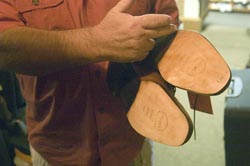
He does not usually custom-fabricate shoes because it is cost prohibitive, especially today with such inexpensive shoes on the market. Cheap shoes are imported, and products, such as silicone, have become endemic. Cobblers no longer really dye shoes, because almost all leather footwear is coated with silicone, which repels the dye. And the inventory of dye itself has changed from 120 colors to 60. Pricing has had an effect, too. "Well," Fred explained, "they're buying boots that cost $79, and it cost $65 to change the soles. So a lot of them, they'll go tear them up and then by a new pair of boots. Now, the person that buys the $150-500 pair of boots will spend the $65 to fix them."
Perhaps the most unusual "project" Freddy Jr. worked on in his short but vital life was responding to a request for a protective shoe for an elephant. The enormous creature, housed at the Baton Rouge Zoo, was suffering from an infected nail when a vet suggested surgical intervention and, then, some sort of sheath to cover the area while it healed. Freddy sussed out the problem and developed a solution by casting the elephant's enormous foot and making a sturdy shoe to protect the healing foot. To create the big shoe, he engaged a handful of other specialists: the sole was made by a company which usually cuts the tough, robust material for truck beds: Rhino Liner. They got on board, trimming it to shape and perforating the edges. The upper was made by a company, which usually manufactures weather-resistant tarpaulin covers for semi-trailers.
"They laid the elephant down," he recalled, "and propped it up. They would grind it out, [the area of nail decay] they'd put the salve and stuff on it. . . . This is after I put the boot on it. I put laces on it [the thing looked like a huge basketball shoe], but the elephant could actually untie the laces!" In the end, they put wire ties in, so the salve had time to soothe the sore spot. It all worked, and the animal got well."
According to Freddy Militello, Jr., his greatest satisfaction was just doing the work. "There's no computer that's going to fix a shoe. Because everyone is different. And you literally have to fix it on the go. When the person comes in. Whatever it is, whatever's got to be fixed, that's what you fix." Everyone in Baton Rouge seems to know Militello's as the place to get your shoe repairs done, and Freddy Jr.'s presence in the family business will be sorely missed.
Shavarsh Kaltakdjian Custom Jewelry and Repair
Shavarsh Kaltakdjian's Armenian family immigrated from Syria about four decades ago. They lived in the capital, Damascus, which is among the oldest continuously, inhabited cities in the world, and it was in that great historic center that Shavarsh, owner of "Shavarsh K - The Jewelry Design Shop" in Baton Rouge, began to apprentice in his trade.
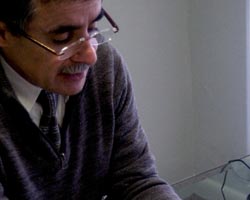
"I stumbled into making jewelry," he partly jokes. "I was watching a friend [in Damascus] making small components of jewelry at his house, working in a corner of one of the little rooms. I would watch him and he would make those pieces from nothing! It was so fascinating. One day I said, 'let me try to make one of those.'" Thus, as a young teenager, he began learning his craft. He kept at it and eventually began to make and sell jewelry. At the age of seventeen, he realized, "This is what I want to do for the rest of my life." Soon, he advanced to apprentice with "the best craftsman in the city," who happened to be his distant relative. After about a year with him, he moved to Beirut to apprentice "for a couple of months" at a factory; however, the family made the decision to immigrate to Baton Rouge, so Shavarsh had to put his jewelry making aside for a couple of years while the family re-settled.
As new arrivals to the capital city, members of the family worked together to build Serop's Restaurant (named after his father), what Shavarsh thinks is the first Lebanese restaurant in Baton Rouge, "maybe the South?" He explains that although a number of such restaurants—especially his own family's—flourish now, at the beginning it was a hardship to adjust the recipes to local tastes. As he said, "People were not used to [Middle Eastern cuisine]. So, we had work with that. We all lived together in one house, worked hard getting the restaurant going." Slowly, he began to set aside a section of one room in the crowed house for jewelry making. Then, through the years, he would open a commercial business, get overwhelmed with work, close that storefront to just work from home, open a new shop, and get too busy again. Eventually, he began to pace himself to manage the workload. Now, he is settled at his final location on Jefferson Street—directly across the street from one of the several Serop's Express restaurants, owned by his brother.
lost-wax equipment and micro tools.
Shavarsh explains that, in many ways, his jewelry making is still part of an ancient tradition, with tiny hand tools. His workspace is populated by instrument trays in orderly rows, supplemented by more modern powerful optical aids and motor-driven grinders. And in the backroom, much of the area is devoted to the flasks, forms, vacuum pump, and small foundry associated with "lost wax" or cire-perdue. Traditional lost wax involves making a positive form—a wax duplicate copy of the imagined piece of jewelry. This is "cast" into plaster housed in a strong support. Once heated, the wax exits, volatilized out, leaving a void or negative "shape." It's this void, which is replaced with material (often with help of centripetal force or vacuum pressure) to create the piece. Of course the casting is not yet finished. This process may indeed be associated with one or more components of a complicated piece for which much assembly and hand finishing remains.
Shavarsh works in gold, platinum, or silver, performing all sorts of tasks including simple repair, but high-end design is his raison d'être. To gain precision in jewelry design, the craftsman explains that years ago he began to get interested in computer-assisted design. At first Shavarsh and a colleague shared the cost of a basic software program for designing jewelry electronically. Later, he risked it all, taking out a second mortgage on his home to buy a sophisticated 3-D milling machine and computer suite. This "cutting-edge" technology, in conjunction with Biblical era (actually 3rd millennium BC) casting in precious metals, allows remarkable production innovation.
Two-dimensional renderings supported by computer were a great step up, but the more recent 3-D representations were, for Shavarsh, a great help. "It's much easier for the person to get an idea of what the piece will look like. In the past, even with good drawings, lots of times they would be disappointed with the final piece. They wouldn't take it. It's a lot of wasted effort. The process of production is painstaking, it takes a long time, and they don't want it. Now, if they can . . . look at it on the screen in every position, they have a much better idea." Technical advances make the work better, faster, and more economical while improving the overall fine quality.
With his up-to-date technology, the computer aided rendering of the "piece" is created as a wax precursor by the milling machine, which is extraordinarily precise, if not fast. "I will set it and let it run, it can go on all night sometimes," Shavarsh says. However, no matter how sophisticated the sourcing is, the "lost wax" process is essentially traditional. "I gain in clarity of what I can show to a client before hand, and the machine has close tolerance," he says, "but the casting is still the same." Ultimately, the satisfaction of his work comes from his customers: "It's when I sense the happiness when a person receives a piece of jewelry."
He is in the process of helping one customer realize her dream of owning a bangle bracelet composed of jewels she has collected throughout her lifetime. He designed the bracelet using AutoCAD software. He then measured each gem and made a setting for it, numbering each setting to correctly place each gem. He then distributed the many and varied gems in the shape of the bracelet. The bracelet is a perfect example of ancient and contemporary techniques. He sent the electronic file to a company who offered the service of 3D printing. They printed the form in wax, and another company did the casting in metal. Shavarsh must hand-set and hand-polish each jewel in the bracelet. Soon Shavarsh will do his own 3-D printing in house. He recently placed an order for a 3-D printer.
Zeagler's Music Store, Instrument Repair
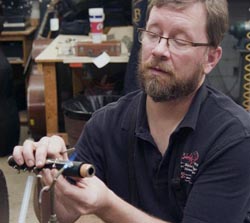
Brian Falcon, a life-long native of Baton Rouge (except for a little travel, Boston, Ohio, and Minnesota for his schooling), is chief technician and musical repair specialist at Zeagler's Music Store, a full-service center. In addition to repair, Zeagler's offers retail sales of new instruments, music accessories, and related material, as well as maintaining an instrument lease program to support the music classes in local schools. Brian, now in his mid-forties, began working in instrument repair when he needed a part-time job while attending LSU in the 1990s. As he apprenticed with Tom Miniear at the shop, he was valued for his skill in instrument repair. Recognizing that Brian had a talent for working with his hands, Fred Zeagler, owner of Zeagler's Music, sent Brian in 2001 to train at Minnesota State College Southeast Technical School, in Red Wing, Minnesota. According to Brian, Gene Beckwith essentially developed the Red Wing program, in conjunction with factories, with the express notion of training students how to repair their musical instruments. Brian attended the school for one year, with the understanding that he would return to Zeagler's. He did return, and he has worked at Zeagler's ever since.
The workspace designated for musical instrument repair at Zeagler's includes two stations (one for Brian and a second for his associate, Doug Geiman), storage for boxes of "spare parts" and partially dismantled instruments, shelves for pieces coming in or awaiting assignment, and sections devoted to a few power tools, including a small standard wood lathe. Many of the "specialty" tools are identical to every-day hand tools, used to drive screws and nuts, tighten bands and turn bolts, pry off fittings, and file metal to fit. As Brian, and occasionally Doug, commented during the interview, Brian worked on an oboe, creating a smooth join between segments, and refitted the tiny levers with their associated cork pads for the sound holes. It's clear that the tools and the skillset perform hand-in-glove.
Doug, who fills second chair, "was one of my customers, I guess," Brian recalls. "And he was always kind of hanging around, asking questions, and it ended up where we'd take on summer help." After completing his degree in Trombone from Southeastern Louisiana University in Hammond, Doug decided to also attend Red Wing in Minnesota to train in instrument repair.
Brian's shop does all sorts of repair. Every now and then, they work on stringed instruments: "If we have things that are coming apart at the seams, that kind of stuff, on the string instruments . . . we can glue them and clamp them. But that's not really our bread and butter. Mostly what we do is the band instruments." Mostly, they work on clarinets, saxophones, flutes, trombones, trumpets, oboes, bassoons, piccolos, and bass clarinets, to name a few. As he puts it, "If you blow it, we fix it."
Interestingly, each instrument has its own very particular demands and requirements, yet there are general principles that operate across the board: the process of fitting a thin ribbon of composite sheet cork around the tapered end of an instrument's joint is similar for most musical instruments using cork for press fittings. In the procedure, he first slices a narrow strip or ribbon from a standard sheet with a new single-edge razor blade. Then, after a trial fitting, he glues this thin "collar" into place. The specialist trims the residual length, buffs the cork edge to a perfect taper on that spinning lathe, using a piece of fine sand paper, and, at last, hand fits the join. Once the cork, firmly glued into place and gently shaped into the exact sloping contour, provides a firm but easy fit, it is greased with a special waxy product to prevent its drying or decomposing.
The spinning table lathe is a commonly used tool, good for turning the cork into the proper shape. Some of the tools are more specialized, or they are standard tools used in uncommon ways. For example, Brian uses a mundane acetylene torch to heat the nickel alloy keys in order to "shape" them into place. But he also uses a very specialized "pad cup heater," which runs electrical current through these same keys, relying on the alloy's resistance to create heat, and melt the cork-wax in a precisely focused way.
However, perhaps the most unusual tools are the rare-earth magnets, hugely powerful units that, in conjunction with appropriate "anvils" (ball shaped companions), allow the technicians to "pull" many dents from damaged wind instruments. In the past, the bells, throats, and tubes would have necessarily had the seams compromised, the metal planished, and the instrument re-soldered. With the tremendous pull of the magnets, the bent or dented area can often be corrected with a far less invasiveness and costly procedure.
As Brian noted, "there are a million tools." But, he pointed out. You want it to sound right, and look right. You don't want glue coming out. "So I try to be as clean and neat as I can. So now you can see why these things take time. And that's that."
Conclusion
Traditional occupations are powerfully influenced by the economy, the marketplace, and emerging technology. These businesses include a wide array of specialized skills and arcane tools to perform work for a wage. However, each skilled worker described here shares much more than the realities of the changing, modern workplace; they all share the drive to undertake satisfying work, to create a satisfying product, and deliver it to a satisfied client. "Customer Service" to these skilled workers is far more than a cliché. It is seeing customers walk away completely satisfied with a perfectly fitting key; a finely restored piece of antique furniture; an impeccably tailored, hand-crafted suit; a one-of-a-kind bat bound for the Hall of Fame; a transformed pair of shoes, even one for an elephant; a dream-come-true wedding ring; or a shiny, restored instrument with a true sound. Through their chosen occupations, these skilled workers lend their talents to the people of Baton Rouge.
Sources
Alford, Gary. 2014. Personal Interview. Baton Rouge, Louisiana. Dec. 19.
Cudd, Jay. 2014. Personal Interview. Baton Rouge, Louisiana. August 8.
Falcon, Brian. 2014. Personal Interview. Baton Rouge, Louisiana. October 24.
Geiman, Douglas. 2014. Personal Interview. Baton Rouge, Louisiana. October 24.
Martinez, Manuel. 2014. Personal Interview. Baton Rouge, Louisiana. October 25.
Marucci, Jack. 2014. Personal Interview. Baton Rouge, Louisiana. November 28.
Militello, Fred. A., Jr. 2014. Personal Interview. Baton Rouge, Louisiana. August 8.
Kaltakdjian, Shavarsh. 2014. Personal Interview. Baton Rouge, Louisiana. Dec. 30; January 23.



